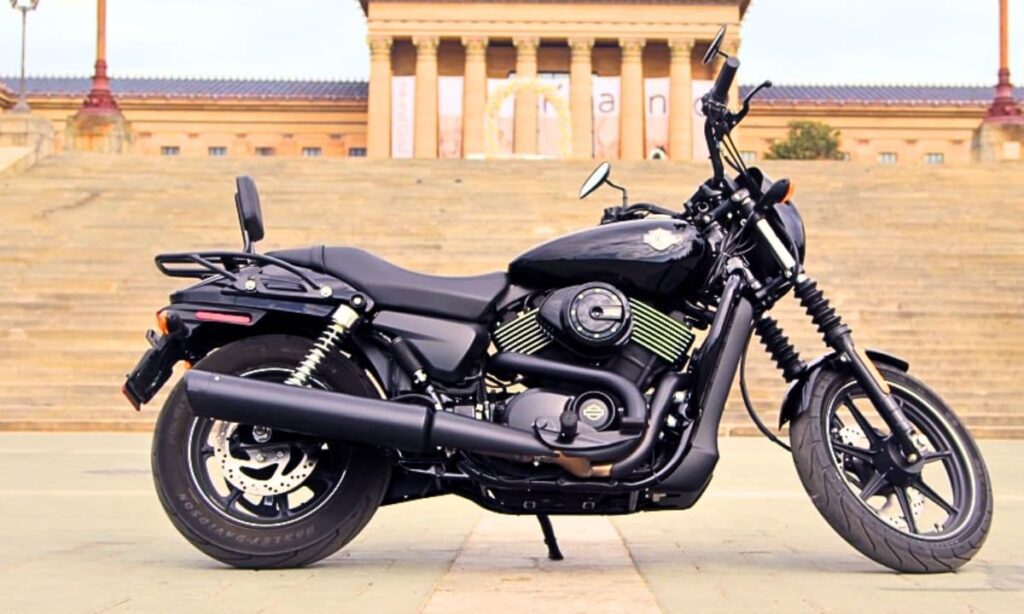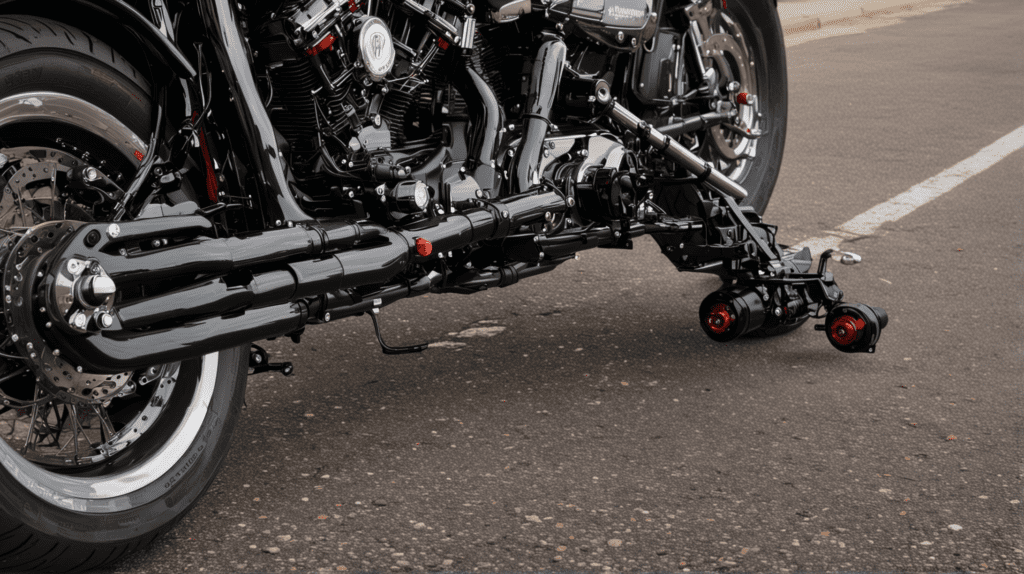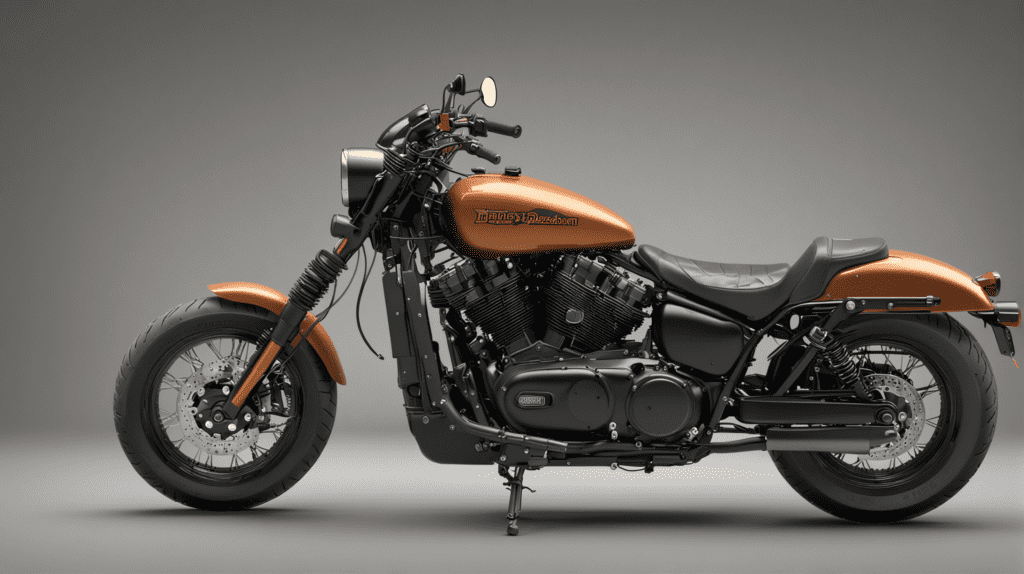When I first saw the Harley Street 750, I fell in love with it. I imagined riding on wide, open roads, feeling powerful with every roar of the engine.
But owning this motorcycle wasn’t just fun and games. My time with Street 750 has been like a ride on a rollercoaster filled with exciting moments, but it has also given me some headaches.
I want to tell you about the great times, the problems, and the surprises that came with this famous bike.
Harley Davidson Street 750 Problems
The common problems with the Harley Davidson Street 750 are poor fuel economy, uncomfortable seats, overheating issues, inefficient brakes, starting problems, bad fuel pumps, coolant leakage, and weak headlight beams.

1. Poor Fuel Economy
Poor fuel economy is a significant issue that most riders have encountered with their motorcycles.
This problem indicates that the motorcycle is not as fuel-efficient as it should be, leading to more frequent stops at the gas station and increased running costs.
A few underlying factors could contribute to this, such as improper riding habits, inadequate maintenance, or issues with the bike’s fuel system.
To tackle this issue, you should ensure that your bike is regularly serviced, paying close attention to the air filter, spark plugs, and tire pressure, as these can dramatically affect fuel efficiency.
However, adopting smoother riding techniques and avoiding excessive idling can help improve the motorcycle’s fuel economy.
If you continue to experience poor fuel efficiency despite these adjustments, consult a professional mechanic to examine the bike’s fuel injection system.
2. Uncomfortable Seat
One common issue that owners often face is the discomfort experienced with the stock seat, especially during long rides.
The primary complaint is typically centered around the lack of padding and poor ergonomic design, which can lead to soreness and fatigue.
This problem is particularly noticeable on extended journeys where the constant vibration and hard surface can exacerbate discomfort.
You have a few options to address this issue. Firstly, consider investing in a high-quality aftermarket seat designed for enhanced comfort and better support.
Many of these seats feature additional cushioning and are shaped to distribute weight more evenly.
However, gel inserts or foam pads can be added to the existing seat as a cost-effective solution.
These modifications not only improve comfort but also make the riding experience more enjoyable and sustainable over longer distances.
When choosing an aftermarket solution, it’s crucial to select a product that aligns with your specific needs and riding style for the best results.
3. Overheating Issue
This problem can be particularly prevalent during hot weather or when riding in heavy traffic, where airflow around the engine is reduced.
Overheating not only causes discomfort to the rider due to the heat emitted from the engine but can also lead to long-term engine damage.
Symptoms of overheating include the engine feeling unusually hot, an increase in engine noise or ticking sounds, and, in severe cases, loss of power or engine failure.
To mitigate this issue, you are advised to ensure your motorcycle’s coolant levels are adequately maintained and regularly check the engine for any signs of oil leakage or blockages in the airflow to the radiator.
However, installing an aftermarket oil cooler can offer an extra layer of protection against overheating by improving the engine’s cooling efficiency.
4. Inefficient Braking
One of the commonly reported issues among Street 750 owners is its inefficient braking system.
This problem typically results in a longer stopping distance than expected or a lack of responsiveness when the brake lever is applied.
Riders have found that this issue compromises safety, particularly in emergency situations where rapid deceleration is necessary.
The core of the problem lies in the braking components used in the Street 750 model, which may not provide the optimal level of friction and pressure distribution required for swift, efficient stopping.
To address this concern, you should inspect the brake pads, discs, and fluid.
Often, upgrading to higher-quality brake pads and ensuring the brake fluid is freshly topped up can significantly improve braking performance.
However, checking the brake discs for wear and tear and replacing them if necessary can enhance the bike’s stopping power.
5. Starting Problem
This problem can manifest as difficulty in getting the engine to turn over, or in some cases, the engine might not start at all.
The reasons behind this issue can vary from a drained battery, faulty spark plugs, or even issues with the fuel system.
To troubleshoot this problem, begin by checking the battery, as it’s the most common culprit. Ensure it’s fully charged and in good condition.
Next, inspect the spark plugs for any signs of wear or damage and replace them if necessary.
You should also make sure that the fuel system is clean and that there’s no blockage preventing fuel from reaching the engine.
In situations where these steps don’t resolve the issue, it might be worthwhile to consult a professional mechanic.
6. Bad Fuel Pump
The fuel pump is a crucial component that delivers fuel from the tank to the engine, ensuring that the bike runs smoothly.
When it malfunctions, you might notice symptoms such as difficulty in starting, a noticeable decrease in power, stalling, or the engine might not run at all.
The root cause of fuel pump issues can vary, including wear and tear over time, a clogged fuel filter, or electrical problems.
To diagnose a bad fuel pump, listen for a buzzing sound from the fuel tank when you turn the ignition key (but don’t start the engine).
This sound indicates that the pump is working. If you don’t hear anything, the pump may not be functioning.
To address this problem, start by checking the fuel pump fuse and relay.
If they are fine, the next step could involve replacing the fuel filter, as a clogged filter can strain the pump.
If these steps do not resolve the issue, it might be necessary to replace the fuel pump itself.
Replacing the fuel pump requires some mechanical knowledge. It involves draining the fuel tank, removing the tank to access the pump, and then replacing the pump.
Always ensure safety by disconnecting the battery before beginning any work and work in a well-ventilated area to avoid fumes.
7. Coolant Leakage
One common issue that has been noted by Street 750 riders is coolant leakage.
This problem can result in various ways, such as puddles of coolant appearing under the motorcycle when parked or signs of leakage around the hose connections and the radiator itself.
Coolant leakage is not only a nuisance but can also lead to more serious problems, such as overheating of the engine, in the worst-case scenario.
To address this issue, begin by checking the radiator, hoses, and connections for any signs of wear and tear or damage.
It’s also crucial to inspect the radiator cap for a proper seal, as a faulty cap can cause leakage. If any damaged parts are found, they should be replaced immediately.
You should also ensure that the coolant levels are within the recommended range, as a deficiency and an excess can lead to problems.
8. Weak Headlight Beam
Weak headlight beams can significantly affect nighttime visibility and, as a result, rider safety.
The problem often stems from either a malfunctioning headlight bulb, poor electrical connections, or aging of the headlight’s reflective surface, which diminishes its ability to project light efficiently.
In order to address this issue, I began by checking the headlight bulb for any signs of damage or wear and replacing it if necessary.
However, inspecting and cleaning the headlight’s connections can ensure that there is a proper flow of electricity.
If the problem persists, examining the headlight assembly for any internal damage or wear and considering its replacement might be necessary.
9. Intermittent Speedometer
Owners occasionally face an issue where the speedometer behaves intermittently, displaying erratic speed readings or ceasing to function altogether.
This problem can be attributed to several factors, including loose or corroded wire connections, a faulty speed sensor, or issues within the speedometer unit itself.
Fixing the issue starts by inspecting all wiring connections leading to the speedometer and speed sensor.
Look for any loose, damaged, or corroded connections. Tighten or replace the wiring as necessary.
Inspect the speed sensor, as the unit itself can be faulty. Usually, the speed sensor is located near the front wheel.
Clean the sensor thoroughly and check for any signs of damage. If the sensor appears damaged, it may need replacement.
Also, the wiring should be inspected to see if the wiring and speed sensor are in good condition; the problem might lie within the speedometer unit itself.
This could be due to a malfunctioning internal circuit or other issues that might require professional repair or replacement.

Tonmoy, the brains behind the influential motorcycle-focused website, TwoWheller.com, is a dedicated and passionate advocate for biking culture. Born and raised in a family of motorcycle enthusiasts, his love for two-wheeled transportation was ignited at an early age. His commitment to providing in-depth reviews and helpful tips for riders has established him as a respected figure in the motorcycle community.

